Here at Pedestrian Space we love to do Friday Art Features, typically featuring artists from around the world whose work includes themes of urbanism and mobility.
This Friday, we are excited to feature Budapest-based Lili Thury, a freelance graphic designer and visual artist who has been studying art therapy since 2020. Her artworks mainly focus on urban topics and social issues. She notes that she is “attached to the constantly changing, exciting, diverse urban fabric, which often inspires my art as well.”
Lili also works with art pedagogy and holds several workshops for children, teenagers and adults.
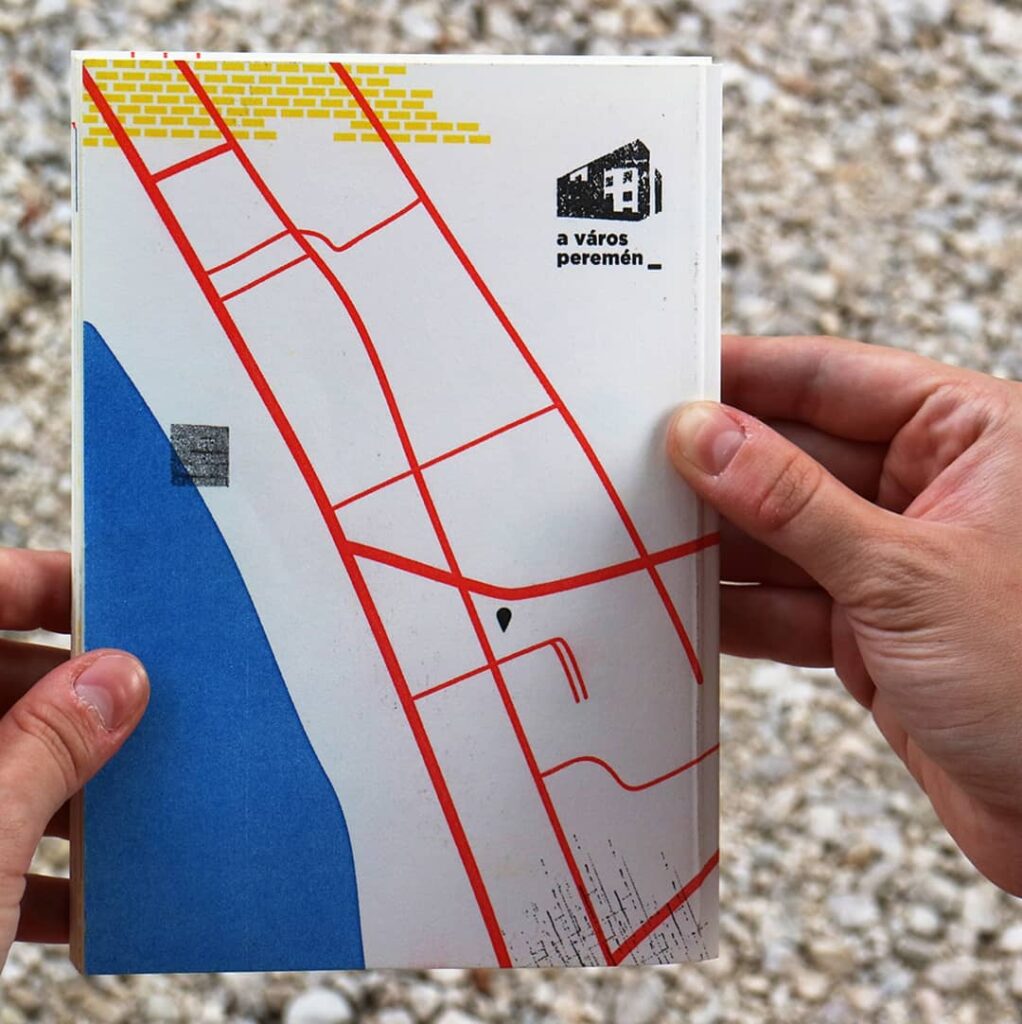
“I like to get on trolleys, buses, trams and go from destination to destination. There are places I’ve never been to and it’s exciting to travel and wander around those parts. I like to exist as a ‘flaneur’ in Budapest and discover unknown parts of it.”
-Lili Thury, Budapest

How does the city you live in inspire your work?
I live in Budapest, the capital of Hungary. The city is divided by the Danube, with Buda (hillier, greener) on one side and Pest (more vivid, more ‘urban’) on the other. This in itself gives the city a characterful townscape. Budapest is a very diverse city, with different neighborhoods, districts, architecture: historic buildings, tenement blocks, socialist-era housing estates, huge office blocks, green spaces, the Jewish quarter, Buda villas, poor neighborhoods, large boulevards, small streets and places with a good atmosphere. On the one hand, there are renovated places that serve the locals of the area, but also parts that are being gentrified, that exclude the inhabitants.
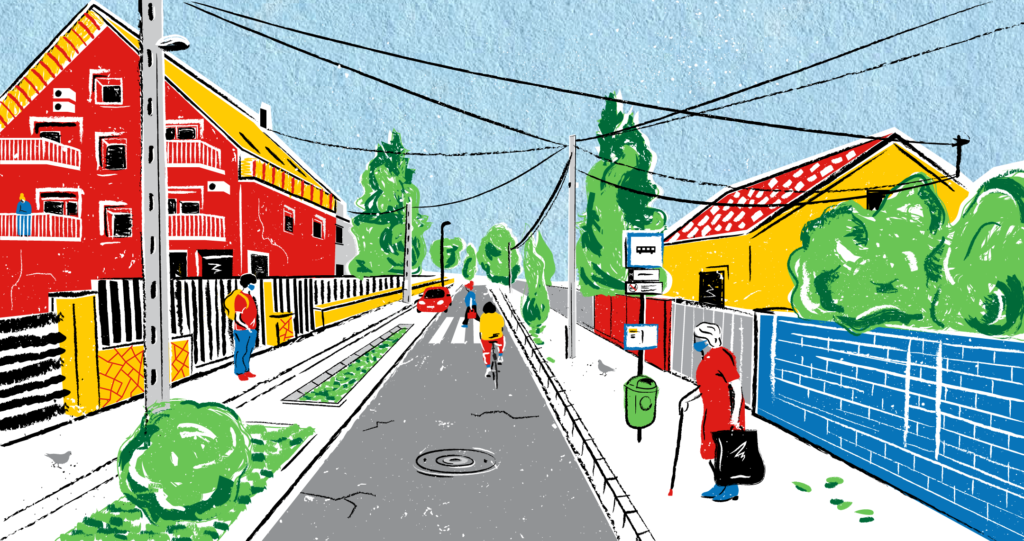
It’s interesting to see how the city changes from year to year. I’m attached to Budapest and it’s inspiring to live here in every way, both because of the things that make me happy, but also because of the issues I am dissatisfied with: I can think about them, do something about them or reflect on certain phenomena with some kind of artwork.
I have always lived in Pest, but since last summer I have been living in Buda. It is nice to experience and discover both parts of the capital.

What is the relationship between the city and your art? How does urbanism influence your work?
In my graphic design and in my own art projects, I often deal with the city, which is one of my favorite subjects. I’ve made graphics for several organizations dealing with urban phenomena. I’ve designed posters for housing demonstrations, made illustrations, some zines and maps for an NGO working for a liveable, democratic city. In addition, I created the visual concept of several exhibitions dealing with housing or architecture. In my art projects I have also worked on themes related to urban spaces.
For example in my graduation exhibition – ‘Once there was a Dzsumbuj’ – I dealt with a stigmatized housing estate on the outskirts of Budapest, which was demolished by the local municipality. The inhabitants moved to different parts of the city and I was interested in how the residents experienced living there and what their lives were like after the demolition. We took interviews with the residents and we edited them into a book – it was a part of my graduation project to design this book and visually process the interview fragments.

In another project, there was an exhibition in a former, empty furniture store with a very interesting structure (called HOME Store). I participated with an installation that reflected on Hungarian housing and urban problems – gentrification, criminalization of homelessness, housing poverty – through collage and drawing.
Currently I am working on a collage series which deals with the Corvin Department Store, which is an emblematic building of Blaha Lujza Square, one of the busiest squares in Budapest. The Department Store was built in 1926, in neoclassical style and Corvin was a world-class shopping mall at the time. The role of the department store has changed over time, reflecting current political and social conditions. Through the Corvin Department Store, I examine the transformation, timelessness and layers of the space. The square is now being renovated, so it is particularly interesting to see what role it will play in the life of the city in the future.
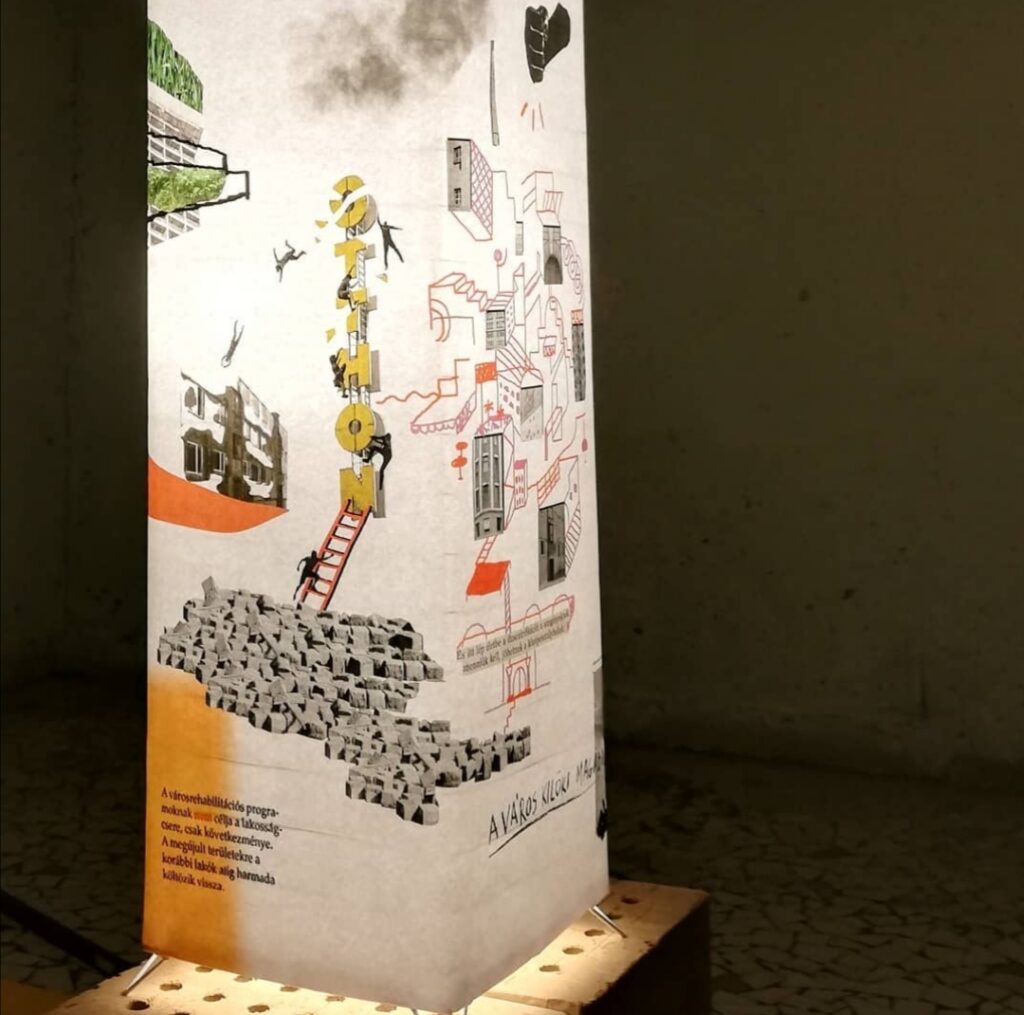
What mediums do you work with?
Collage is one of my favorite genres. I feel through this medium I can express my relationship with the city the best: different layers and materials, coherent and sometimes random imagery, small details and different textures. I like to use manual and digital techniques together: drawing, chalk, photographic details, paper textures with digital layers. The poster medium is also close to me and zine, small publication is my other favorite genre. I also like to move my graphics in a very simple format, GIF.
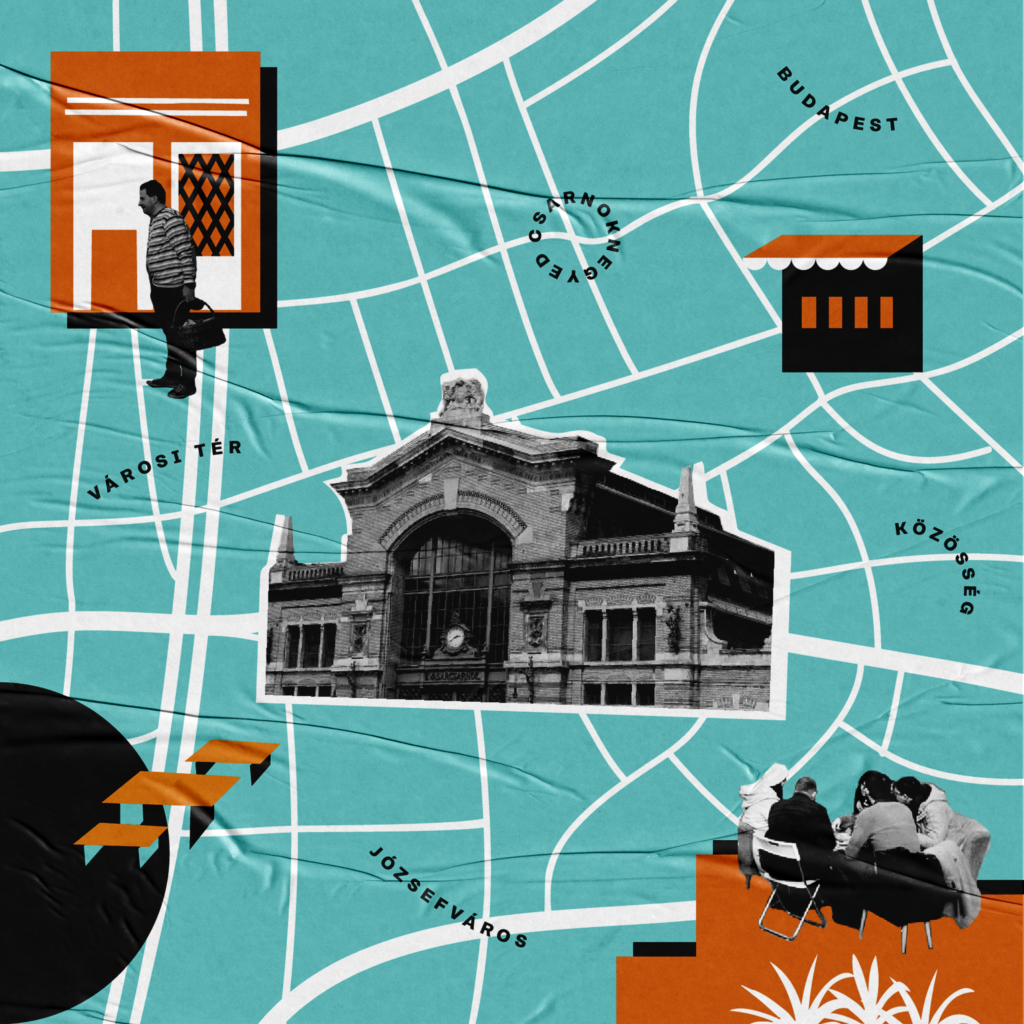
I see you are also working with participatory art and aspects of inclusion? Can you share more about this?
I’ve had some collaborative art projects in recent years. One of my goals is to make understandable to the public what I do. If participants come from different backgrounds in a collaborative art project, it’s important that they can benefit from the project and not just the artist/artists. I think that’s often difficult to keep the balance.
But it can be very exciting when different people can work together to raise awareness of a topic, or even to process their own personal experiences by involving artists or art.
That’s why I love workshops, community art projects, because there everyone has the opportunity to create, to share knowledge together, which can be very liberating.
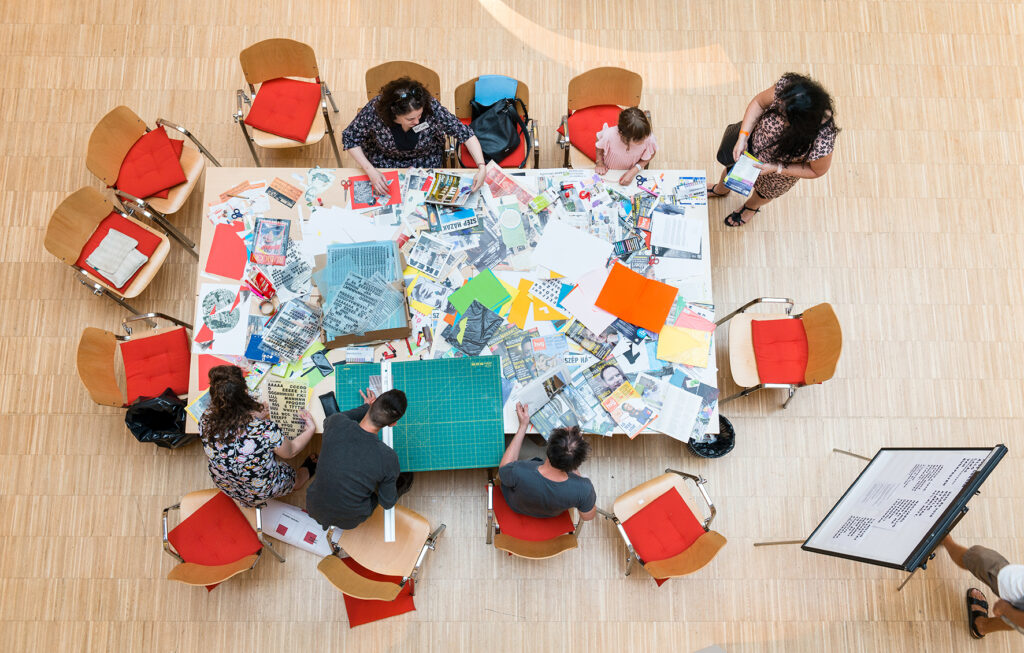
I saw in one of your posts mention of a “Contemporary Dreams and Housing Today” workshop. It sounds very interesting- can you share more about this?
This montage-making workshop was a side program of Collective dreams and bourgeois villas exhibition. This exhibition presented the works of the CIRPAC group, between the two world wars and the related Hungarian architectural and political scene. Bauhaus villas, socially engaged architecture, confrontations with authority – these were presented side by side in the exhibition. I also designed the exhibition, and the visual concept developed during several months of thinking together with curators and architects.

In the workshop we used pictures, photos, newspapers, typography to reflect on the housing situation today and finally, we screened the montages onto the exhibition’s wall. Participants of different ages and interests created different types of artwork, e.g.: activist posters, pictures of their own dream houses and utopian urban cityscapes.

Are there any other workshops or projects you are currently working on that you can share about?
I am currently working on a community art project with my two girlfriends. We invite women who live in the 8th district of Budapest to create together a collective subjective map. We are curious about how the women perceive the city, what their experiences are. Urban planning and construction is also embedded in the patriarchal system, so it is different to exist as a woman in the cities.

During the project, a large map is placed in different squares of the 8th district, where the participants can write, draw, and stick ‘emotion-stickers’ on it. The first event involved many local people. In the meantime, we are making short interviews (with the participants) and we would like to exhibit this map installation in the district in the near future.

I see in some of your recent work illustrations of people with masks walking around cityscapes. So it is clear that aspects of pandemic life are reflected in your work. How has it been the past year (with aspects of the pandemic) in your city and how has it affected your art?
I’m making an illustration series which is showing different parts of Budapest. I started these illustrations before the pandemic, but when it began I automatically drew masks on people, it was so much a part of our lives. The curfew created a completely apocalyptic atmosphere in Budapest, it was strange to see the deserted city. Many smaller places (bars, shops) closed down and are still empty because they went bankrupt. On the positive side, during the pandemic, several bike lanes were established, which is good for the city and also its inhabitants.

How do you move around the city and what is your favorite mode?
If I have time, my favorite mode of moving in the city is walking, but I really like using public transport. It’s nice to watch the racing city while I’m listening to music, or other passenger’s conversation, and observing people. My favorite mode of public transport is traveling by red trolleybus. Trolley lines usually serve shorter routes, the vehicles are sometimes very slow, but I like the sound of them and the routes they serve.
I like to get on trolleys, buses, trams and go from destination to destination. There are places I’ve never been to and it’s exciting to travel and wander around those parts. I like to exist as a ‘flaneur’ in Budapest and discover unknown parts of it.
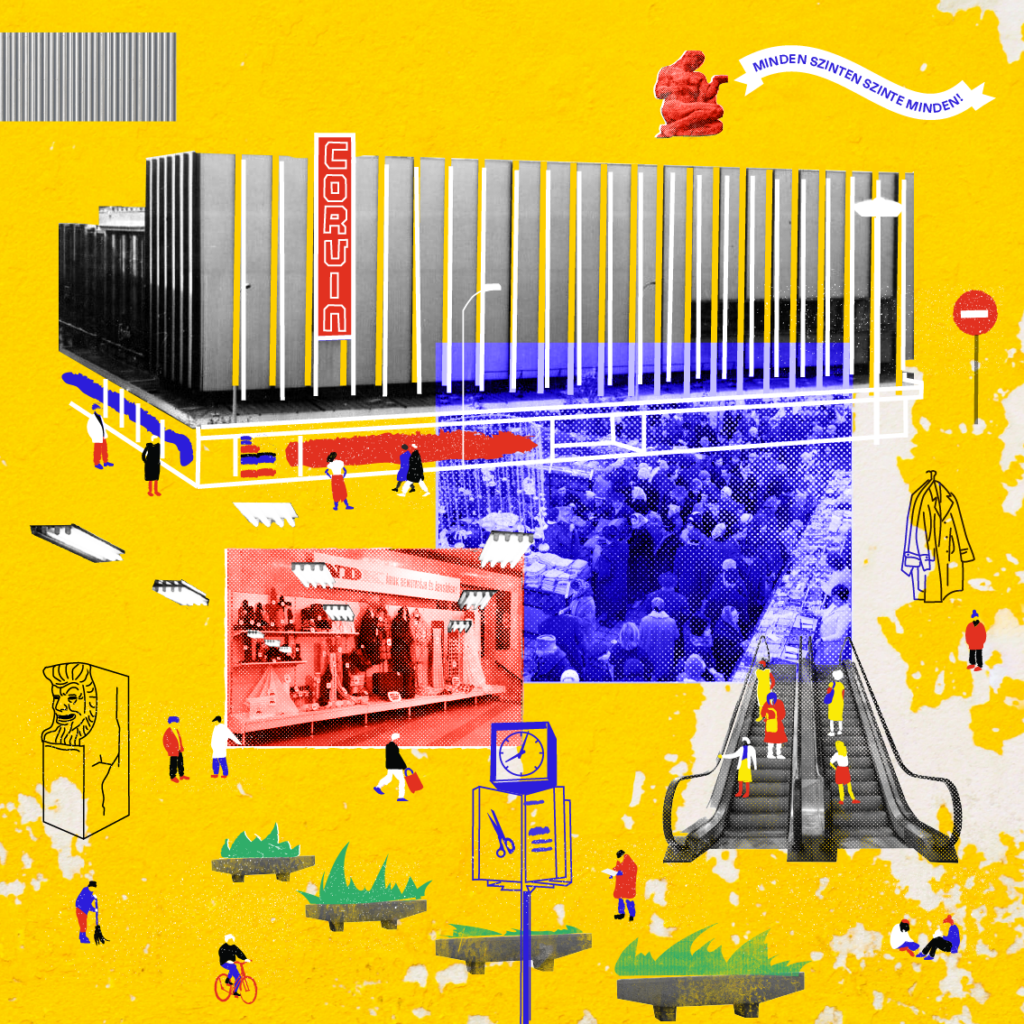
What is your favorite street or sidewalk space in your city of residence?
Recently, one of the small streets in the 8th district (Bacsó Béla) was turned into a pedestrian street, where you can find nice bars and cafes. The district municipality organized a community asphalt painting event there, which had a lovely atmosphere. Also, I really like Mátyás Square in the 8th district, which has a small park, a community center, cafes and playgrounds. I like that local people feel cozy there, but the square is also used by people who just walk by. Blaha Lujza Square, which is now being renovated, is also one of my favorite places. I have a lot of memories from there, traveling through the square many times. And there are also many lovely streets in Buda with lots of greenery.
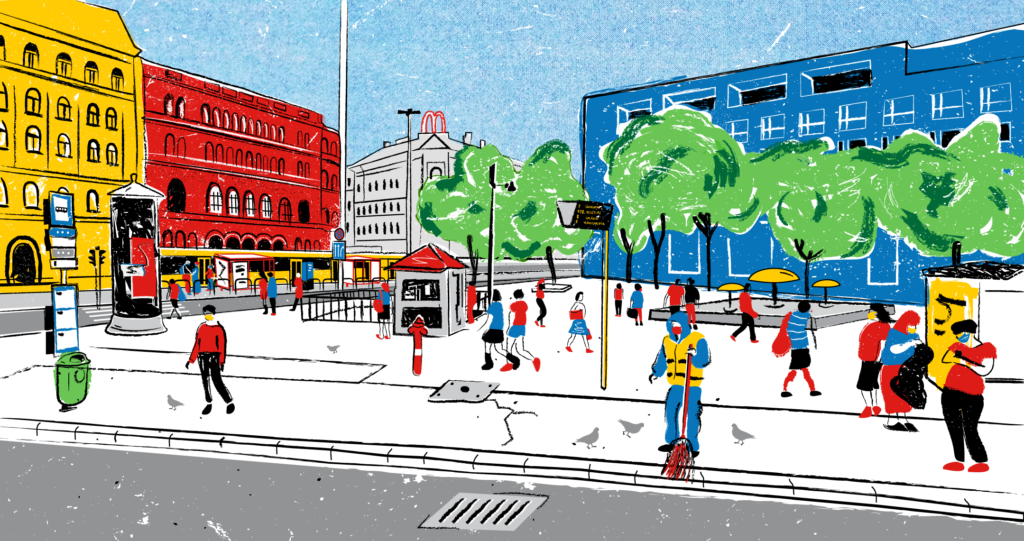

Visit Lili online at https://lilithury.com/

